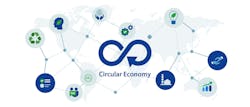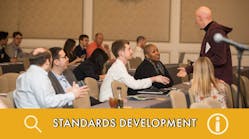After a year on the job, Fagerhult CTO sees plenty of hope for IoT lighting
It’s been a little over a year since lighting stalwart Fagerhult Group tapped IT specialist Johan Lembre to forge an IoT lighting strategy. The company is now readying his revitalized approach to the market, picking up on some quiet successes, such as at the main offices of a Dutch retailer.
In an interview with LEDs Magazine on the occasion of his anniversary as Fagerhult’s first ever chief technology officer, Lembre said that next month will mark the launch of a fresh marketing push into the IoT. He also signaled Fagerhult’s intentions to widen its stable of sensors and wireless technologies in order to better serve IoT customers.
IoT lighting, also known as “connected lighting,” outfits lights and the lighting infrastructure with sensors and communication chips to gather and analyze information on lighting and energy use, on room climate and occupancy, and more. The potential benefits to end users include better lighting and energy management, more intelligent use of space, asset tracking, and wayfinding, among others.
Industry CEOs including Fagerhult top boss Bodil Sonesson have made no secret that progress has been slow since the concept first arrived around a decade ago. Yet companies such as Habo, Sweden–based Fagerhult, Signify, Norway’s Glamox, and others continue to pursue IoT business. That’s why Sonesson hired Lembre last September. Lembre, like Sonesson, came steeped with a background in networked IT, as both previously worked at Swedish connected security camera company Axis Communications (as did new Fagerhult division boss Edwin Roobol).
In Lembre’s year-plus on the job, progress could be described as steady but probably not yet fast. Fagerhult has quietly achieved some notable accomplishments. For example, Lembre revealed to LEDs that Dutch customer bol.com decided to close one of six buildings at its Utrecht headquarters once a week, using occupancy information gathered from Fagerhult smart lights.
“You can imagine the energy savings,” Lembre said. LEDs hopes to report more details on this implementation and other Fagerhult IoT deployments separately.
By his own assessment, however, IoT lighting is still in an educational phase in which vendors such as Fagerhult need to make potential customers aware of connected lighting benefits. It is a characterization that is hardly new. Lighting industry CEOs at Signify, Glamox, Fagerhult, and elsewhere have all described the educational state of play — by now a very prolonged state — for some time. Signify boss Eric Rondolat made a strong reference to it back in April 2020, for instance.
Along those lines, Lembre and Fagerhult are now preparing to refresh the lessons, which should become evident next month.
“We are just completing material that we will call the 'seven reasons' for smart lighting that we are going to launch in November,” Lembre told LEDs, withholding the details for now, except to say, “It’s a higher level, educational piece.”
Whatever the exact seven reasons are, Lembre boiled down the three overarching drivers into sustainability, building utilization, and personalized lighting, also known as circadian lighting or human-centric lighting. The most fundamental of the three will be the energy and material savings of “sustainability,” after which the the other benefits follow, Lembre said.
LEDs will report more on these soon. A common denominator for all of them will be an expansion of Fagerhult’s connected lighting technology stable, which today includes the company’s own Organic Response sensors and the use of wireless communication protocols from Finland’s Wirepas. Future sensors could include new offerings that provide more granular information on occupancy and movement. Future wireless deployments could make use of the Matter interconnectivity protocol backed by Google, Apple, Amazon, and others, Lembre noted. To date, the company has mostly made use of the Wirepas protocol from Finland’s Wirepas.
Lembre is confident that connected lighting will eventually catch on broadly. He pointed out that after his former company Axis made technology breakthroughs in networked security cameras in 1996, “it took, I would say, eight-to-ten years before it really took off.”
It’s been about 10 years now for IoT lighting. Yet the foundational education continues. At some point, it seems, the students will have to either graduate or drop out.
MARK HALPER is a contributing editor for LEDs Magazine, and an energy, technology, and business journalist ([email protected]).
Follow our LinkedIn page for our latest news updates, contributed articles, and commentary, and our Facebook page for events announcements and more. You can also find us on the X platform.
Mark Halper | Contributing Editor, LEDs Magazine, and Business/Energy/Technology Journalist
Mark Halper is a freelance business, technology, and science journalist who covers everything from media moguls to subatomic particles. Halper has written from locations around the world for TIME Magazine, Fortune, Forbes, the New York Times, the Financial Times, the Guardian, CBS, Wired, and many others. A US citizen living in Britain, he cut his journalism teeth cutting and pasting copy for an English-language daily newspaper in Mexico City. Halper has a BA in history from Cornell University.





